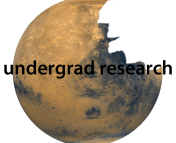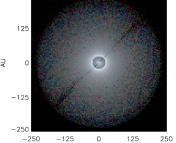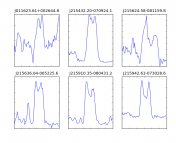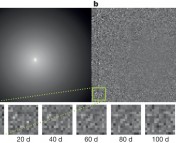This is the fourth installment of our series featuring research done by undergrads. If you missed out on previous posts in this series, you can check them out here:
UR#1: Gamma-Ray Bursts and Protostars
UR#2: Near-Earth Objects and Hot Stars
UR#3: Star Clusters and Shock-Heated Gas
You can share what you’re doing too by clicking on the “Your Research” tab above (or clicking here) and using the form provided to submit a brief (fewer than 200 words) write-up of your work. The target audience is one familiar with astrophysics but not necessarily your specific subfield, so write clearly and try to avoid jargon. Feel free to also include either a visual regarding your research or else a photo of yourself!
We look forward to hearing from you!
************
Brittany Batman
Manchester College
A Simulated Galaxy Redshift Distribution
A link between the observed universe and simulated models of the universe can be made through the large scale structure characteristics of the galaxy redshift distribution. The output of simulated models can reveal a significant amount of information about the universe if the model can be verified and contrasted with observations of the actual universe. Computationally simulating the evolution of the universe results in information about the distribution of dark matter, baryonic gas, and galaxies in a finite volume with periodic boundary conditions. Using the galaxy distribution at different epochs, we distribute the galaxies in a larger space and compute the redshifts in order to create a model that reproduces surveys such as the Sloan Digital Sky Survey (SDSS), among others. The redshift calculation gives a measurement of the time elapsed since the light was emitted.
A computer program was created to manipulate the output from the simulated model’s distribution of galaxies. The program we use translates, rotates and shuffles the galaxy distribution and then takes computed quantities (galaxy position and velocity) to calculate the redshift, creating a galaxy redshift catalog similar to the SDSS by imposing survey characteristics, such as magnitude limits in the different observed bands (or portions of the electromagnetic spectrum). This simulated galaxy redshift distribution program will be used to create a bridge between the simulated models of the universe and observations of the universe.
Brandon Calabro
New Mexico State University
3- and 5-Minute Oscillatory Behavior in the Solar Corona
We study the spatially- and temporally-localized oscillatory behavior of the solar corona using a 6-hour sequence of narrowband 171 A (extreme ultraviolet) images from the SWAP instrument on board Proba2. We use a Morlet wavelet transform to extract oscillation parameters from the temporal evolution of emission in each pixel and study the variation in space and time of oscillatory power in the 3- and 5-minute bands. We extract and compare these parameters between active Sun, quiet Sun and coronal hole regions. In all studied regions of the corona the 5-minute periodicity is more prevalent than the 3-minute periodicity by a factor of 2−3. All areas of the corona exhibit a similar temporal behavior in the 5-minute band, suggesting a global driving mechanism. However, the dominance of the 5-minute periodicity is stronger in active regions than in other areas of the Sun. The 3-minute periodicity in active regions tends to be localized in the sunspot umbra, whereas the 5-minute is more prevalent in the penumbra.
************
Many thanks to Brittany and Brandon for their contributions!





